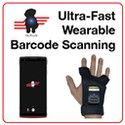MHI Industry Series: The Role of Mobile Automation in Warehouse Integration
This special episode, part of the MHI Industry Group Series on The New Warehouse Podcast, dives into the Mobile Automation Group (MAG) and the evolving role of mobile automation in warehouse operations. Kevin welcomes MAG members Geoff Schreiber, Senior Manager of Product Management for Automation at Bastian Solutions, and Matt Bush, VP of Technology, Innovation, and Research at KPI Solutions. Together, they explore the challenges and opportunities in integrating Autonomous Mobile Robots (AMRs) and Automated Guided Vehicles (AGVs) into modern supply chains.
Driving Market Awareness and Education in Mobile Automation
MAG is a leading industry group within MHI. It comprises 48 members, including OEMs, component manufacturers, and system integrators. The group aims to promote market awareness, drive technological advancement, and advocate for safety in mobile automation solutions.
“MAG is an industry group within MHI that consists of 48 members of industry-leading companies. Our mission is to promote market awareness, growth, and the effective use of mobile automation across our industry,” says Bush.
Beyond industry collaboration, MAG focuses on educating warehouse operators and decision-makers. The landscape of mobile automation continues to evolve, and understanding the key differences between AMRs and AGVs is crucial when considering integration strategies.
“Customers looking at mobile automation should take a look at what we can offer. We help educate them on the varieties of mobile automation and how they can benefit operations,” adds Schreiber.
Overcoming Integration Challenges for AMRs and AGVs
Integrating mobile automation isn’t a one-size-fits-all approach. It depends on several factors, including warehouse layout, IT infrastructure, and fleet management. One of the primary challenges is determining how these systems will operate alongside existing processes.
“Integration comes down to how vehicles will operate in a facility—how they communicate, how routing is determined, and what modifications are needed for navigation,” explains Schreiber. “You have to consider IT infrastructure, interfaces with WMS/WCS, and whether the system will operate as standalone or as part of a larger network.”
Another key distinction in integration is understanding the role of AMRs versus AGVs. AGVs generally follow fixed paths, while AMRs make real-time decisions based on environmental data. This distinction affects how warehouses deploy these technologies.
“I try to keep it simple—does it follow a fixed path or not? Instead of getting caught up in the terminology, we should focus on the use case and the problem we’re trying to solve,” says Bush.
Future Trends: Standardization and Interoperability in Mobile Automation
As mobile automation technologies advance, industry-wide standardization efforts are gaining momentum. This push for interoperability allows different brands and types of automation to work seamlessly together within a facility.
“The industry is evolving, especially with AMRs. Standards are emerging around multi-agent fleet managers, and collaboration among industry groups is driving standardization,” notes Bush.
Schreiber also highlights the growing role of digital twins and simulation in expediting the deployment of automation. By leveraging feature-based navigation and AI-powered fleet management, warehouses can reduce implementation time and maximize efficiency.
“The speed at which we can bring solutions to customers has dramatically improved. From digital twins to fleet management interoperability, we’re seeing faster deployments and better results,” Schreiber explains.
Key Takeaways for Integrating Mobile Automation
- MAG consists of 48 member companies focused on advancing mobile automation.
- Successful integration of AMRs and AGVs requires careful consideration of IT infrastructure, routing, and facility layout.
- Standardization efforts make it easier for different automation systems to work together seamlessly.
- The industry is shifting toward AI-driven fleet management and feature-based navigation for faster deployment.
- MAG offers educational resources to help companies navigate mobile automation adoption.
Listen to the episode below and leave your thoughts in the comments.
Guest Information
Geoff Schreiber – Senior Manager of Product Management for Automation, Bastian Solutions
Company Website: Bastian Solutions
Matt Bush – VP of Technology, Innovation, and Research, KPI Solutions
Company Website: KPI Solutions
Additional Resources
From Idea to Pilot: A Practical Guide to Planning for Success of a Mobile Automation Project
Check out the content below for more information on the MHI Industry Series.
Diving into the World of Warehouse Racking with RMI
Mastering SLAM Processes & Sustainability in Warehousing
Powering the Future: Exploring Advanced Energy Solutions for Warehouses




